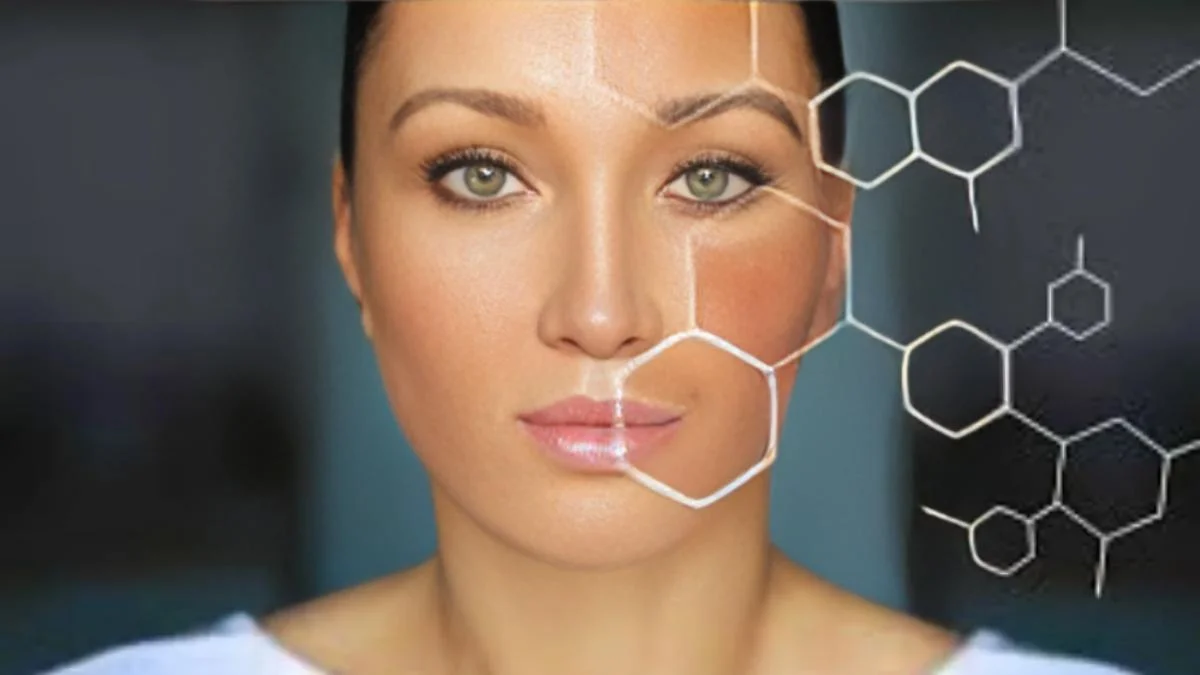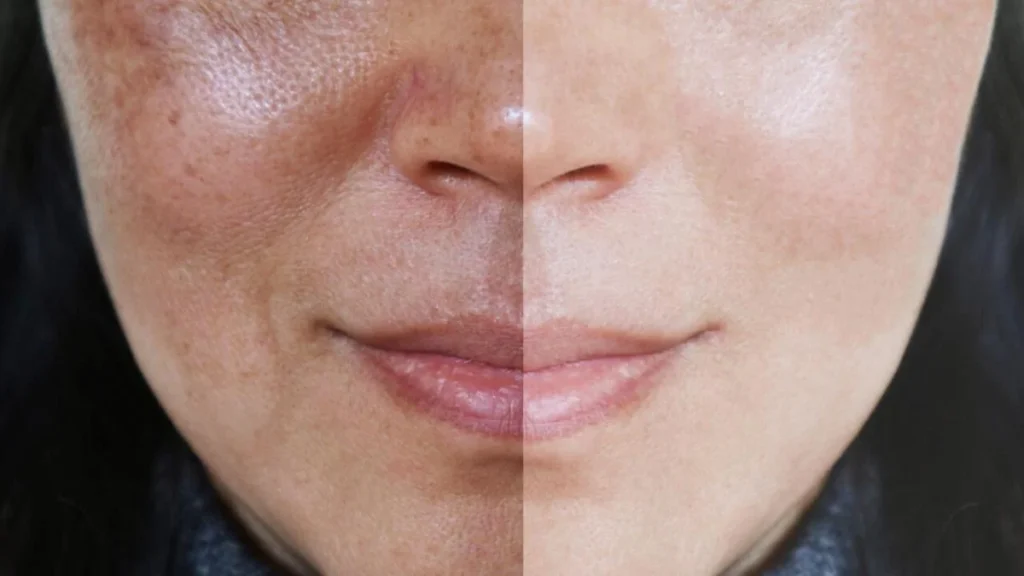TIPS
What is the Fastest Way to Cure Melasma?

Melasma is a common skin condition characterized by dark, discolored patches on the skin, often occurring on the face. While not harmful, it can be distressing for those affected, as it often impacts one’s self-esteem and confidence. Understanding the fastest and most effective ways to cure melasma is essential for those seeking to restore their skin’s natural tone and texture. In this article, we will explore the causes of melasma, the fastest treatment options available, and how to prevent its recurrence.
Table of Contents
Understanding Melasma: Causes and Risk Factors
Melasma primarily affects women, particularly those with darker skin tones, though it can also occur in men. The condition is most commonly triggered by hormonal changes, such as those experienced during pregnancy, which is why it is sometimes referred to as “the mask of pregnancy.” Other common triggers include:
- Sun exposure: Ultraviolet (UV) light from the sun stimulates the melanocytes in the skin, leading to the overproduction of melanin, which causes the dark patches associated with melasma.
- Hormonal changes: Fluctuations in hormones, particularly estrogen and progesterone, can trigger melasma. This is common during pregnancy, menopause, or while taking oral contraceptives or hormone replacement therapy.
- Genetic predisposition: A family history of melasma increases the likelihood of developing the condition.
- Certain medications: Some medications, particularly those that make the skin more sensitive to sunlight, can trigger melasma.

The Fastest Treatment Options for Melasma
When it comes to treating melasma, speed and effectiveness are key. Here are the most effective treatment options:
1. Topical Treatments
Topical treatments are often the first line of defense against melasma. These include:
- Hydroquinone is a skin-lightening agent that inhibits the enzyme responsible for melanin production. Available in both over-the-counter and prescription strengths, hydroquinone is one of the most effective treatments for melasma. It is often found as a key ingredient in combination creams, such as those containing tretinoin and corticosteroids, which enhance its effectiveness. One such combination is found in products like Tri-Luma Cream, which is commonly prescribed for treating melasma. However, it is important to use hydroquinone under the guidance of a dermatologist to avoid potential side effects such as skin irritation.
- Tretinoin and Corticosteroids: Often used in combination with hydroquinone, tretinoin (a form of vitamin A) and corticosteroids enhance the skin’s ability to shed dead cells and promote the growth of new, healthy skin. This combination is often referred to as “triple cream.”
- Azelaic Acid: Azelaic acid is another effective topical treatment that works by reducing the production of melanin. It is often used as an alternative to hydroquinone for individuals with sensitive skin or those who cannot tolerate hydroquinone.
- Kojic Acid and Vitamin C: Both kojic acid and vitamin C are natural skin-lightening agents that can help reduce the appearance of melasma. These ingredients are often found in over-the-counter serums and creams.

2. Chemical Peels
Chemical peels involve the application of a chemical solution to the skin, which exfoliates the top layer, promoting the growth of new, even-toned skin. Superficial and medium-depth peels are most commonly used for treating melasma. Ingredients like glycolic acid, salicylic acid, and lactic acid are commonly used in these peels. Chemical peels can provide faster results compared to topical treatments, but they should be performed by a professional to minimize the risk of complications.
3. Laser and Light Therapies
Laser and light therapies are advanced treatments that can provide rapid and significant improvement in melasma. These treatments target the pigment in the skin, breaking down the excess melanin that causes dark patches. Some of the most effective laser treatments for melasma include:
- Fractional Lasers: Fractional lasers, such as the Fraxel laser, create micro-injuries in the skin, prompting the body’s natural healing process and encouraging the production of new, healthy skin cells.
- Intense Pulsed Light (IPL): IPL therapy uses broad-spectrum light to target and reduce pigmentation in the skin. This treatment is less invasive than lasers and can be effective for mild to moderate melasma.
- Q-Switched Lasers: Q-switched lasers emit short pulses of energy that break down the pigment in the skin without damaging the surrounding tissue. This treatment is particularly effective for deeper, more stubborn melasma.
4. Microneedling
Microneedling involves the use of fine needles to create micro-injuries in the skin, which stimulate the production of collagen and elastin. When combined with topical treatments, microneedling can enhance the absorption of active ingredients, making it an effective treatment for melasma. Microneedling can provide faster results than topical treatments alone, and it is particularly effective for individuals with darker skin tones.
Preventing the Recurrence of Melasma
While treating melasma is important, preventing its recurrence is equally crucial. Here are some tips to help maintain your results:
- Sun Protection: Sun exposure is one of the leading triggers of melasma, so it is essential to protect your skin from UV rays. Wearing a broad-spectrum sunscreen with an SPF of 30 or higher every day, even on cloudy days, is the most effective way to prevent melasma from returning. Additionally, wearing a wide-brimmed hat and seeking shade whenever possible can further protect your skin.
- Consistent Skincare Routine: Maintaining a consistent skincare routine with products that contain active ingredients like hydroquinone, retinoids, and vitamin C can help keep melasma at bay. Regular exfoliation can also prevent the buildup of dead skin cells that can contribute to the appearance of dark spots.
- Hormonal Management: If hormonal changes are triggering your melasma, talk to your doctor about possible alternatives to hormone replacement therapy or oral contraceptives. In some cases, adjusting your medication can help reduce the likelihood of melasma returning.

Conclusion
Melasma can be a challenging condition to treat, but with the right approach, it is possible to achieve clear, even-toned skin. Combining topical treatments, professional procedures, and preventive measures is the fastest way to cure melasma and prevent its recurrence. By working closely with a dermatologist and following a tailored treatment plan, you can achieve the best possible results.
-

 GENERAL2 months ago
GENERAL2 months agoUncovering the World of кинокрадко: The Dark Side of Film Piracy
-

 GENERAL1 month ago
GENERAL1 month agoUnveiling the Art of преводсч: How Translators Bridge Language Barriers
-

 YOGA1 year ago
YOGA1 year ago4 Person Yoga Poses for Beginners
-

 GENERAL3 weeks ago
GENERAL3 weeks agoChristofle – For Those Who Dream of Family Heirloom Silver























